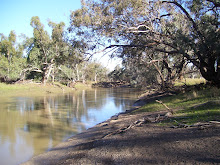The little buggers should enter stage right under the green trapdoor and continue down toward the dried dog food in the black container on the trigger plate.Once the bird starts to eat the vibrations will trigger the trapdoor to close rapidly. This will capture the first bird into the trap. This bird will stay in the trap and act as the caller for the rest (hopefully). There will be water in the cage so the mynah will not suffer. I have put newspaper down because I am not partial to mynah faeces on the BBQ table!
Top view.
As the trapdoor is now closed there has to be another way into the cage for other mynahs. This is thru the tunnel on the top of the cage. Mynah birde are not adverse to pushing thru small openings as they do this all the time to nest in roofs and hollow trees. The caller bird will bring them in and they will land on the top of the cage and see the food thru the tunnel and enter the cage. The tunnel stops about 100mm above the floor of the cage and is fashioned in such a way they cannot leave via the tunnel.
This is a view of the trapdoor and trigger mechanism at the front of the trap. The trigger mechanism was filed down to make it, as we say in hunting parlance, "a hair trigger". This was done because the cage was originally a possum trap and possums are a lot heavier then mynah birds and the lighter mynah bird would not trigger the trapdoor without this modification. This trap originally cost $79.00 at FX Larkin at Unanderra a few years ago.
A "proper" mynah trap retails for around $300.00 on the internet. You would have to hate the buggers a lot to spend 300 bucks to kill 'em I reckon!
Here is an end view of the trap with the dog food bowl that the mynahs are used to eating out of. This, hopefully, will lure them in and when the couple of biscuits are devoured the mynahs will enter the trap.The trap only went into use today so I will keep you posted on its success. Cruelty is out of the question and Indian Mynahs must be euthanised humanely. A vet will usually help here. Wear gloves as they are filthy, lice and disease infested, savage little shits that will peck you!












